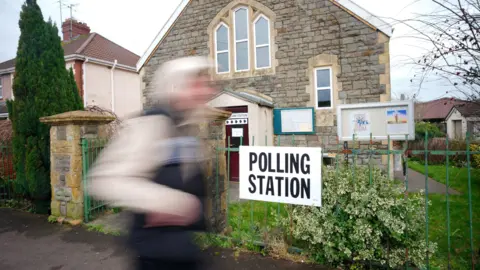On the horizon of the political landscape in England, local and mayoral elections are poised to take place on Thursday, 1 May 2025. This day will mark a significant event for voters in specific areas, offering an opportunity to cast their ballots for local representatives and influence governance at various levels. The elections will involve 24 councils out of the 317 in England and feature six mayoral authorities.
As the voting day arrives, polls will be in operation from 07:00 BST until 22:00. Voters can expect the results to roll in throughout the evening and into the following Friday. A crucial highlight of the election cycle is a by-election in Runcorn and Helsby, which will determine the new Member of Parliament for the constituency in Cheshire. This by-election was necessitated by the resignation of the former Labour MP, Mike Amesbury, who left his position following a conviction for assault.
These elections represent the first significant set of polls after last year’s sweeping victory by the Labour Party in the general election. Approximately 1,650 seats will be contested across various local authorities, including 14 county councils and eight unitary authorities, alongside the Isles of Scilly and one metropolitan district. This election cycle also introduces mayoral elections in the West of England, Cambridgeshire and Peterborough, Doncaster, North Tyneside, and for the first time, in Hull and East Yorkshire, as well as Greater Lincolnshire.
It is noteworthy that the original plan for elections for all 21 county councils in England was modified, as the government decided to postpone elections in nine areas undergoing local authority reorganization. In the upcoming elections, residents will have the chance to vote in counties such as Cambridgeshire, Derbyshire, Devon, Gloucestershire, Hertfordshire, Kent, Lancashire, Leicestershire, Lincolnshire, Nottinghamshire, Oxfordshire, Staffordshire, Warwickshire, and Worcestershire. Meanwhile, elections will also occur in various unitary authorities, including Buckinghamshire, Cornwall, Durham, North Northamptonshire, Northumberland, Shropshire, West Northamptonshire, and Wiltshire, along with Doncaster Metropolitan Council and the uniquely governed Isles of Scilly.
For those seeking to participate in the elections, it is important to remember that photo identification will be required. Voters must present one of the 20 approved forms of ID, which includes passports, driving licenses, and, starting on 1 May, Armed Forces Veteran Cards. This requirement adds a layer of planning for voters who wish to make their voices heard on this crucial day.
In terms of public communication covering the elections, the BBC has shared its protocols, which restrict the reporting of campaigning activities or local election issues across television, radio, and online platforms until after the polls close at 22:00. This ensures a fair election environment, free from external influences on voter decisions.
The excitement surrounding these elections hints at the political dynamics in play, shaping future governance in the local councils and mayoral positions. By reviewing local electoral guidelines and checking for elections in their specific areas, constituents are empowered to take an informed approach to voting. As such, this day holds immense significance for voters keen to shape their communities’ future and set a tone for the local governance in England.
To further assist civic engagement, handy resources are available, including the postcode lookup tool to verify if elections are taking place in specific areas, a simple guide detailing everything voters need to know about the local elections, and an explainer on the required photo identification for voting. The upcoming local elections not only represent a collective moment for constituents but also a pivotal point in the ongoing dialogue about local governance, representation, and community dynamics within the fabric of English politics.



